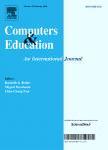版权所有:内蒙古大学图书馆 技术提供:维普资讯• 智图
内蒙古自治区呼和浩特市赛罕区大学西街235号 邮编: 010021

作者机构:QUEENS UNIVFAC EDUCKINGSTON K7L 3N6ONTARIOCANADA
出 版 物:《COMPUTERS & EDUCATION》 (计算机与教育)
年 卷 期:1992年第18卷第1-3期
页 面:209-221页
核心收录:
学科分类:0401[教育学-教育学] 08[工学] 0812[工学-计算机科学与技术(可授工学、理学学位)]
基 金:Ministère de l'Éducation du Loisir et du Sport Québec MELS
主 题:Childrens Art Color Computer Assisted Instruction Computer Graphics Computer Software Educational Media Freehand Drawing Hypermedia Information Technology Optical Data Disks Primary Education Social Influences Teacher Role Word Processing Writing (Composition) Young ChildrenMicroworlds Clip Art
摘 要:This article explores young children s symbol-weaving efforts from two perspectives. Symbol-weaving is an umbrella term for three mutually supportive systems of meaning-making: drawing, talk, and writing. First, we examine how children use traditional media in their symbol-weaving efforts. Examining children s talk, along with their traits, preferences, and styles of drawing and writing, with traditional media, we apply the lessons learned to how these undertakings might be influenced by new information technology. In some instances, technology may detract from the symbol-weaving process;however, newer, more sophisticated software may enhance children s endeavours. Far more influential than the technology is the guidance of teachers. The manner in which teachers permit children to use technology seems to be a crucial variable in terms of restraining or enhancing symbol-weaving. Finally, we suggest that new information technology may offer new ways of thinking about young children s story-making processes and products.